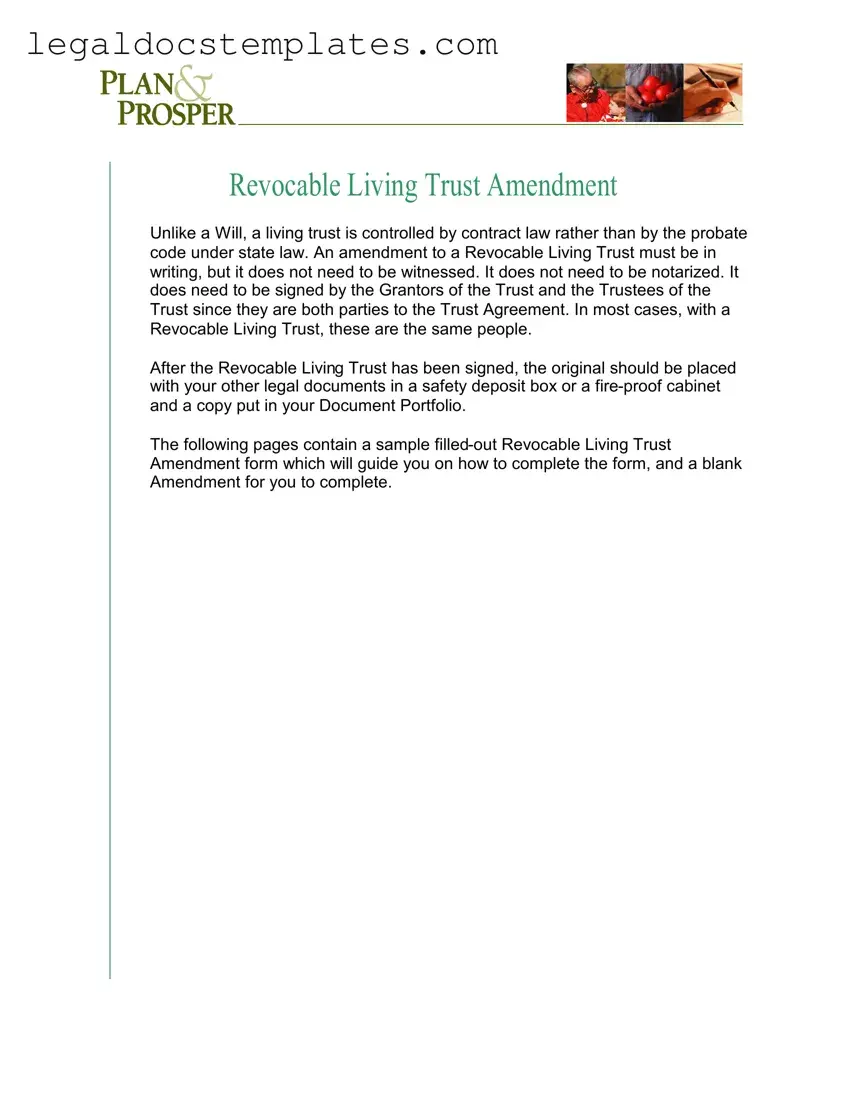A Trust Restatement shares a close resemblance with a Trust Amendment form. While an amendment modifies specific parts of a living trust, a restatement rewrites the entire trust document. Both serve to adjust the terms of a trust, but a restatement is often used for more extensive changes or updates. Like amendments, restatements must be signed by the trust's grantors and trustees, outlining the revised terms and conditions of the trust agreement.
Power of Attorney (POA) documents bear similarity to Trust Amendment forms in terms of their function of delegating authority. A POA grants someone else the power to make decisions on your behalf, whereas a Trust Amendment changes who controls or benefits from a trust. Both require clear documentation and signatures to be legally valid, empowering individuals to act in legal or financial capacities based on the document's provisions.
Will Codicils and Trust Amendments are akin in their purpose of modifying an existing legal document. A codicil amends a will, offering a way to make changes without rewriting the entire will, similar to how a Trust Amendment alters parts of a trust. Both need to be signed and dated, showing the intent to alter the original document according to the current wishes of the individual.
Amendments to a Limited Liability Company (LLC) Operating Agreement show parallels with Trust Amendment forms. These amendments change certain aspects of the operating agreement governing an LLC, aligning with how Trust Amendments modify trust agreements. They are essential for documenting any agreed-upon changes among members, requiring signatures to cement the modifications legally.
Corporate Bylaw Amendments also reflect the nature of Trust Amendments. Bylaw Amendments adjust the rules that govern the internal management of a corporation, just as Trust Amendments update the guidelines of a trust. Both types of documents are crucial for recording changes that affect the operation and governance of the entity, whether a corporation or a trust, needing appropriate approvals to take effect.
Beneficiary Designation Forms have a clear connection with Trust Amendments in terms of designating or changing who benefits from a legal arrangement. While Trust Amendments can change beneficiaries within the trust, beneficiary designation forms specifically change who benefits from accounts like life insurance or retirement accounts. Both actions require careful documentation to ensure that current wishes are accurately reflected.
Partnership Agreement Amendments share similarities with Trust Amendments by altering the terms of an existing agreement between partners, akin to how trust amendments change agreements within a trust. They serve to document any changes in the partnership's operation, roles, or responsibilities, ensuring that all partners agree to the modifications and legally acknowledge them through their signatures.
Amendments to a Shareholder Agreement, similar to Trust Amendments, modify the terms of an existing agreement among shareholders. These amendments can adjust how shares are bought, sold, or the managing structure of a corporation, reflecting how Trust Amendments alter the administration or beneficiaries of a trust. Both require the consent and signatures of the parties involved to validate the changes legally.
Real Estate Deed Changes, while primarily focusing on the ownership transfer of property, resonate with Trust Amendments in terms of altering legal documents. When a trust owns real estate, amending the trust could indirectly affect the management or distribution of that property, similar to how a deed change directly transfers property ownership. Proper execution and recording are required for both to ensure the changes are recognized legally.
Lastly, Amendments to Child Custody Agreements show similarities with Trust Amendments in their ability to modify existing legal arrangements. A Trust Amendment changes conditions within a trust, while a custody amendment changes terms of a custody agreement. Both necessitate formal documentation and court approval, ensuring the best interests of the trust's beneficiaries or child/children are met according to the latest agreement.





